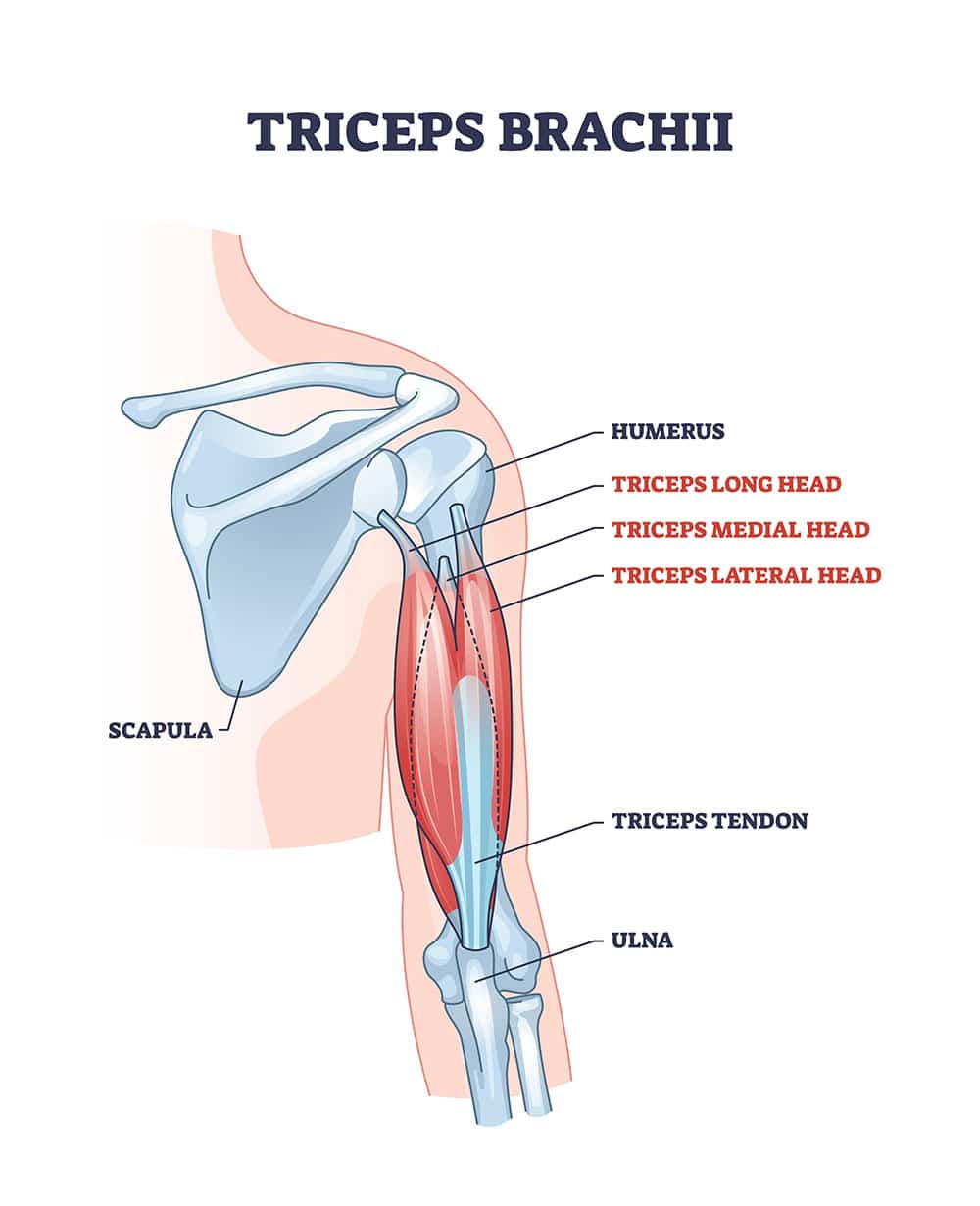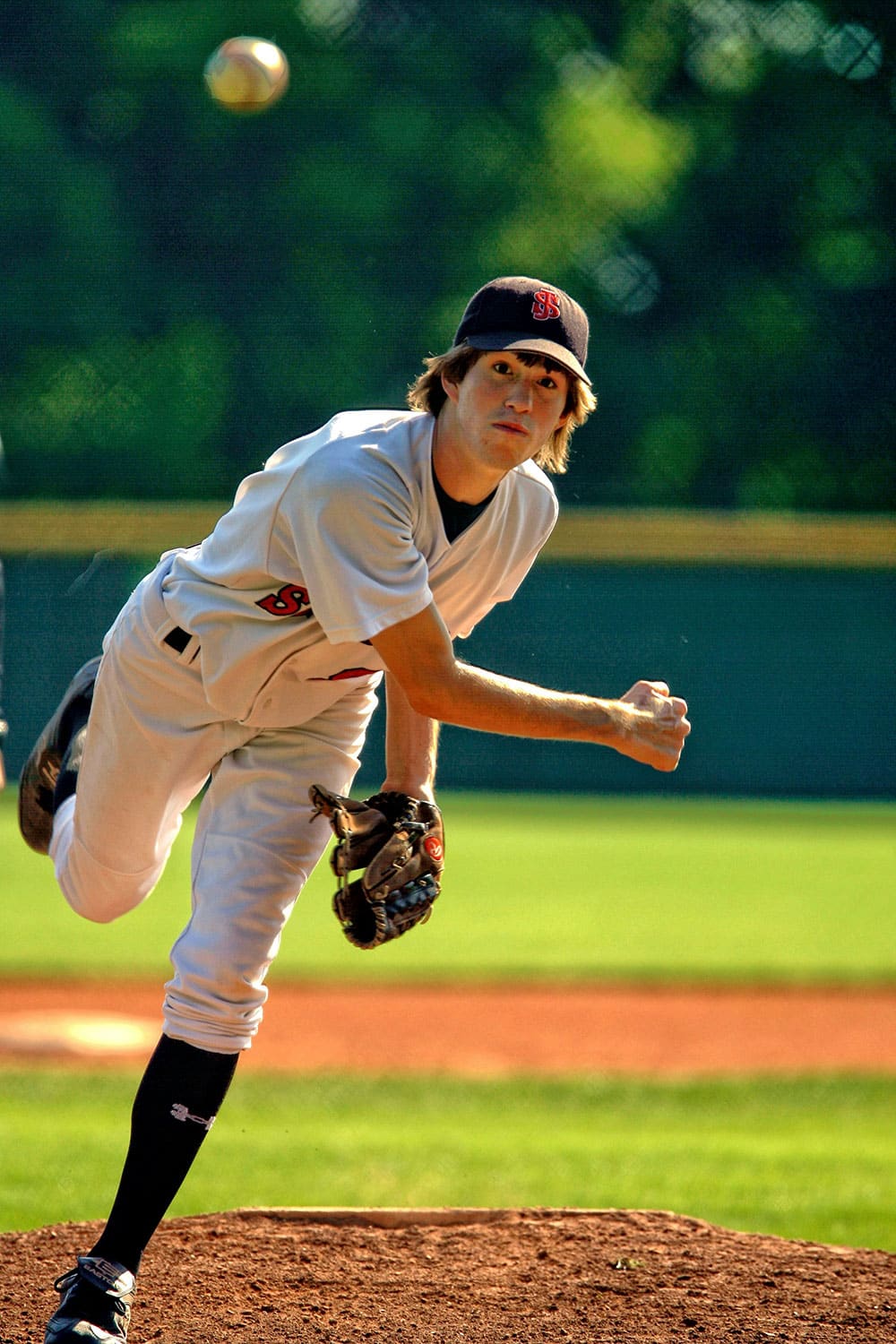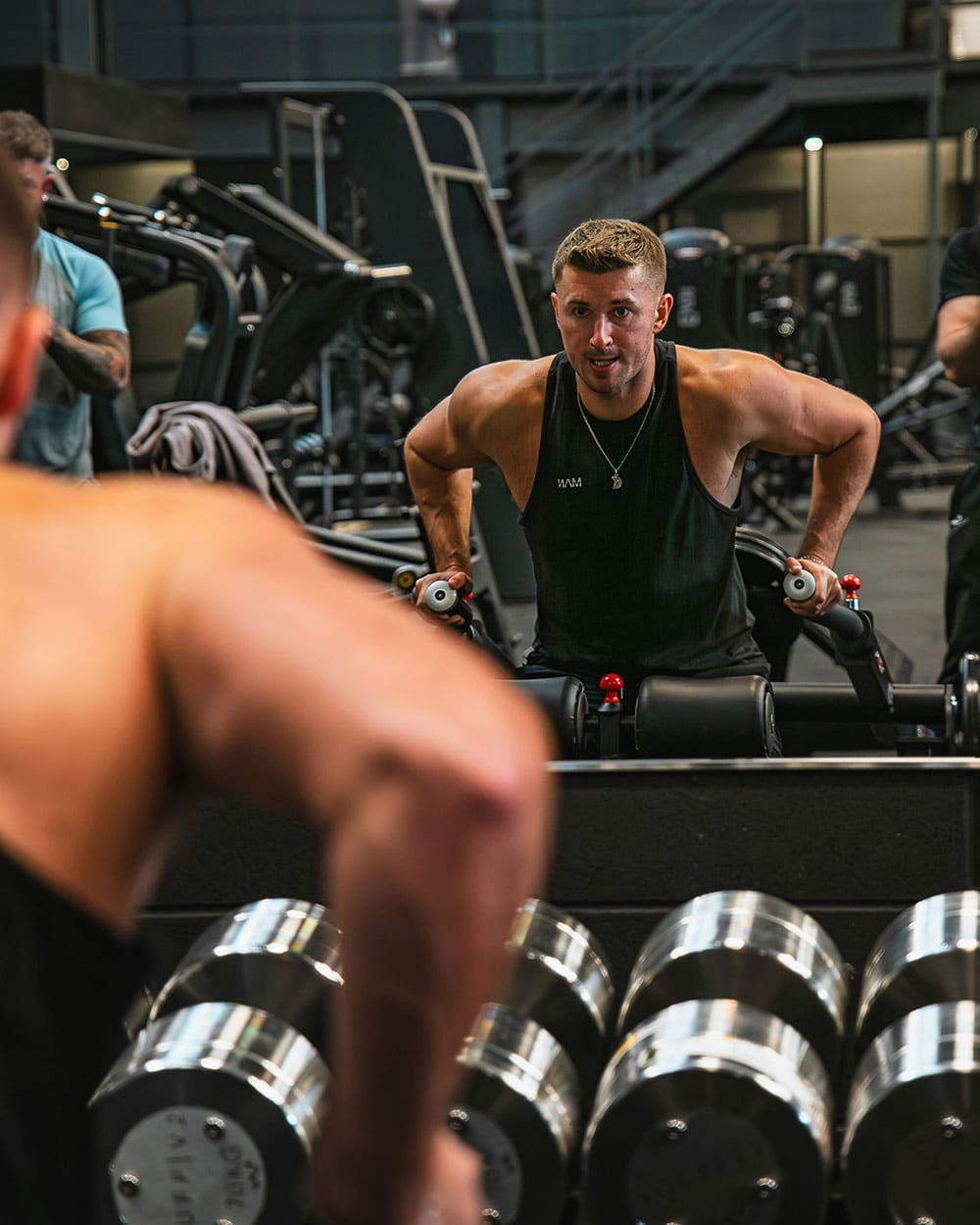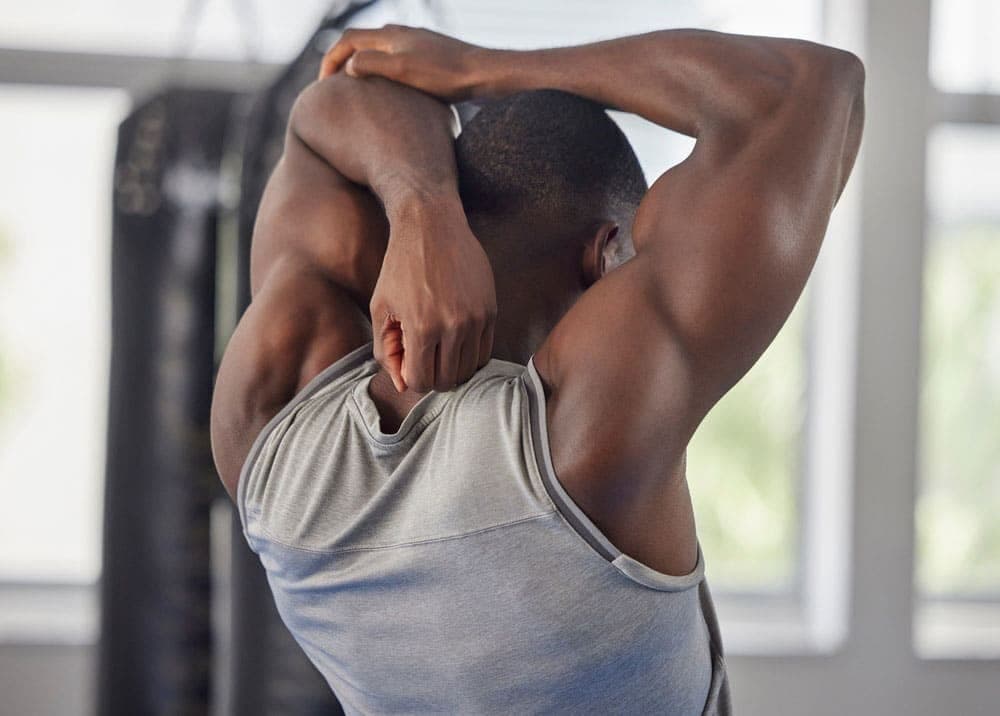Tricep Tendonitis: Symptoms, Treatment and Prevention
This is a complete guide to tricep tendonitis. Learn what causes this condition. Get tips for prevention and treatment, plus strengthening exercises.
Are you feeling pain or stress on the backs of your arms when you perform heavy bodyweight dips or push-ups?
It could be hard work. But sometimes, something a little more sinister is at play. Performing the same weight training exercises that put a strain on your triceps at high rep counts, you could be dealing with tricep tendonitis.
Let’s examine these common sports and weightlifting injuries. We’ll get to know the anatomy of the triceps and what happens when you injure these muscles.
Come along for the read and explore some treatment options, physical therapy exercises and potential symptoms for tricep tendinitis.
About the Triceps
Before exploring all the ways you can injure your triceps, let’s get to know these large arm muscles and see what roles the triceps play in your body.
The triceps brachii muscle, usually simply referred to as “triceps” is the large muscle on the back of your upper arm.
It mainly serves to extend your elbow joint. Triceps muscles work to counteract the work of the biceps, which sit on the opposite sides of your upper arms. Biceps flex your elbows, while triceps extend them.
The triceps is composed of three different muscle “heads,” or origin points.
These are the long head, the lateral head, and the medial head. Each of the three heads comes together to form a tendon that attaches to a part of your elbow called the olecranon process. This sits at the elbow on your ulna bone.
To get to know more about your tricep heads and find workouts to target them, you can read:
- Short Head Tricep Exercises
- Medial Head Tricep Exercises
- Best Long Head Tricep Exercises

What is Tricep Tendonitis?
Tricep tendonitis means the tendon that connects the tricep to the back of the elbow becomes injured, inflamed, or torn.
Typically, tendonitis of the tricep is an overuse injury. This means it’s caused by excessive activation of or strain to the triceps. Usually, this follows a repetitive motion pattern.
Injuries to the triceps are also commonly referred to as “tricep tendinitis,” or “tricep tendinopathy.”
Let’s say you’re performing multiple rounds of dips or tricep push-ups. Here, you’re exerting the tricep muscles at a high rep volume, creating a repetitive use pattern for your muscles. Any weightlifting or calisthenics exercises that cause the triceps to repeat the same moves could result in tricep tendonitis.
Although you should feel sore after push-ups or other tricep-forward exercises, it should feel like a “good ache, “not acute or stabbing pain or the sensation of tearing. If you’re cranking out 100 push-ups a day or 500 push-ups a day, the elevated reps may simply be too much stress on the triceps.
You’re also more likely to see tricep tendonitis in sports that involve throwing a ball, like baseball. This type of exercise requires frequent tricep extension. Repeated throwing movements or patterns could result in tricep tendonitis.
This condition is diagnosed by pain at the back of the elbow. Patients with tricep injuries typically have tears in the tricep muscles. If cases of minor tricep tendon tears, a patient may describe pain when extending the elbow.
In the case of a complete tear, a patient may be unable to extend their elbows at all. Authors of Current Sports Medicine Reports offer an overview of the different Triceps Tendon Injuries and their respective severities.
Symptoms
A typical case of tricep tendinitis comes with a few signs that you may notice. Symptoms include:
- Pain during pushing or pulling motions
- Achiness
- Acute or chronic pain in the shoulder joints or elbows
- Difficulty lifting objects that are typically easy to lift
- Difficulties or reduced capability in sports performance
Causes

Pain or strain to the triceps brachii is typically caused by sports injuries. This can frequently arise from throwing sports where you need to extend your elbows frequently.
Sports baseball or softball, where you pitch balls and swing a bat can be key culprits for aggravating the triceps. This is because those movements require you to extend your elbows frequently and often quickly or sharply.
Tricep tendonitis can be a weightlifting injury too. When you perform moves like tricep kickbacks, dips or tricep push-ups, you put a lot of strain on your triceps in repetitive pattern.
This is especially true if you’re performing these exercises at high reps.

Triceps Tendonitis Exercises
To improve the symptoms of tricep tendonitis, it’s helpful to perform both strengthening and stretching exercises for these upper arm muscles.
You can perform strengthening exercises with the help of a physical therapist for pain relief or as part of your regular workout routine. Try some exercises short term if you have injured your triceps provided you don't feel any pain.
Consult with a doctor to continue tricep workouts while injured. They can help make sure you don't increase the risk of worsening your injury.
Triceps Overhead Stretch

If your triceps tend to feel tight, try a tricep stretch to lengthen and reduce tension in the muscles. To perform this exercise:
- Triceps Stretch: Raise one arm over your and bend your elbow. Push your elbow towards the center of your back with your other hand. You should be able to feel a stretch. Hold your stretch for up to 30 seconds, or as long as you need, then switch arms.
- Variation: If you have good shoulder mobility, and want to add a shoulder stretch to your triceps stretch, you may prefer this variation. Rotate your other arm internally at the shoulder, then send the back of that hand gliding up your back with your fingertips pointing up. Eventually, this hand should meet the hand of the arm that is stretching overhead in the middle of your back. You can clasp fingertips if your hands touch or even grab one wrist with the opposite hand if you’re ultra flexible.
- Practice: If your hands don’t touch yet, continue to practice this stretch daily to improve your flexibility.
Pulldown With Resistance Bands
- Set-Up: Tie a resistance band around a sturdy anchor point.
- Starting Position: Grasp both sides of the back firmly with your hands facing each other and your elbows fully bent. This is your starting position.
- Pulldown: Engage your triceps and use your strength to pull the sides of the band down and apart, so your arms come to a fully extended position.
- Reverse: Resist the force of your band to bring your hands back up and in to come back to the starting position. Don’t let the band snap or jerk your arms back into place. Allow your muscles to work against the resistance. If you find this motion too jerky, use a lighter-weight band.
- Reps: Continue for 3-4 sets of 10 reps.
Chair Dip
A dip variation using a chair with your knees bent at 90 degrees can be one of the best ways to slowly start rehabilitating your triceps after an injury.
This gentle variation on bodyweight dips allows you to work with limited resistance that you control. You won’t overtax your triceps, yet you can still put enough weight on your arms to allow the muscles to start strengthening again.
- Set-Up: Find a chair, bench, box, or even the side of your bed. Make sure your surface of choice can support your body weight.
- Position: Sit on the edge of your chair and grasp the side edges of your chair with your palms facing in toward each other. You can also grab the front edge of your chair and face your palms backward away from you if this is more comfortable. Edge your behind off the chair and engage your shoulders, arms and abs to fully straighten your arms. Plant your feet hip-width apart and bring your knees to a 90-degree bend. The back of your pelvis should just graze the front of your chair.
- Dip: Bend your elbows to descend into a dip, bringing your hips below the seat of your chair. Keep your elbows pointed straight back and use the bend in your knees to absorb most of the resistance of this exercise.
- Reverse: Drive out of your triceps to push your body back up from the bottom of your dip. Use your feet to compensate for the remainder of your body weight if it’s too much for the arms. Keep your abs engaged to stabilize your core.
- Reps: Perform at least 3 sets of 10 reps with proper form. Try to make sure that your torso stays upright and that you’re not leaning too far forward or backward.
Treatments and Medical Care
As a first line of treatment for less severe tricep tendinitis, there are a few steps you can take at home to manage your pain.
RICE Method
One potential treatment option you can explore is the RICE method.
This includes:
- R: Rest— Try to keep your arm at rest for at least 2 days post-injury. Aim to keep your arm still and refrain from activities like writing, typing, or cooking to the best of your ability.
- I: Ice– Apply an ice pack or cold pack to your injury for 15-20 minutes every 2-3 hours in the first two days after injury.
- C: Compression— Keep your arm in a bandage or sling if possible. This will help prevent movement. Make sure your bandage is attached securely to prevent movement, but not so much so that it restricts blood flow.
- E: Elevation— Bring your injured tricep above your heart. This is thought to help reduce throbbing or swelling at the site of injury. Resting your arm on the back of your couch or a nearby shelf are a few options to keep it elevated.
This technique has been linked to some benefits for minor acute injuries that involve swelling at a muscle or joint area. That being said, there is emerging research that RICE may not be the most effective treatment for injuries.
Because you’re applying ice to an injury, RICE may actually counteract the principles of injury healing. Typically, an injury needs more oxygen to the given area to begin the healing process.
RICE Resources
For differing perspectives so you can decide if the RICE method is right for you, you can consult these resources:
- Treatment of Perioperative Swelling by Rest, Ice, Compression, and Elevation (RICE)
- What Is the Evidence for Rest, Ice, Compression, and Elevation Therapy
- The R.I.C.E Protocol is a MYTH: A Review and Recommendations
Bear in mind that these studies were primarily performed on ankle sprains, therefore there are different factors that may make these conclusions more or less applicable to a tricep injury. However, this remains to be studied.
Regardless, if you don’t have time for a doctor's visit or are experiencing a lot of pain, this method seems to work for many types of athletic injuries anecdotally.
If you have a more severe case of tendonitis, you’ll likely need to go to a doctor or other healthcare provider to have the injury assessed.
They may recommend one or several treatment paths for your tricep tendonitis.
These include:
Steroid Injections
Using a corticosteroid can help to bring down localized pain or swelling in the area. During treatment, a doctor or other medical injector would inject a steroid into the area surrounding your tricep tendon to reduce inflammation.
Pain Medicine
Your doctor may prescribe you a specific pain medication if you are experiencing pain that prevents you from being able to work or see to daily tasks.
You can also find pain medications over the counter (OTC) like acetaminophen, aspirin, or non-steroidal anti-inflammatory drugs (NSAIDs) at your local drug store or pharmacy.
Always make sure to take the recommended doses on the packaging of any pain medications or stick to the prescribed dosage from your doctor.
Surgery
Finally, if you’ve seen no improvement in your tendonitis for several months, if you have a complete tear to the tendon with no or severely limited range of motion, or if you experience debilitating pain or reduced quality of life, you may be a candidate for surgery.
Discuss your options and risks with your doctor. They will be able to give you guidance on the risks and benefits of surgery, plus what potential recovery considerations you would need to make after a surgical operation.
The Takeaway
Tricep tendonitis is an unpleasant condition that can be common for those who are active in sports or like to lift weights.
Triceps tendonitis can be used to describe any type of injury to the tendon where the triceps muscle attaches to olecranon process of the ulna (forearm bone). Irritation from repetitive use is the most common cause of tricep tendonitis. This type of injury is more common in men than women and can be seen more frequently in athletes or weightlifters.
That being said, anyone can experience tricep tendonitis and it is associated with manual labor jobs as well.
If you experience tricep tendonitis or injury, try the RICE (rest, ice, compression, elevation) method for an at-home treatment, as long as it feels comfortable and doesn’t cause further pain. You can also try OTC painkillers or medications to reduce inflammation.
If your tricep injury continues for several months or significantly inhibits your quality of life, speak to your doctors about options for steroid injection or surgery.
You can try the exercises outlined in this guide to help rehabilitate injured triceps or to strengthen weak arm muscles and lessen your injury risk.
Plus, get more workouts to target your triceps to prevent tendonitis and other conditions here:
- Best Chest Workouts With Dumbbells
- Tricep V Bar Pushdown
- Chest Warm Up
References
Casadei, K., Kiel, J., Freidl, M. Triceps Tendon Injuries. Current Sports Medicine Reports 19(9):p 367-372, September 2020. | DOI: 10.1249/JSR.0000000000000749
Fischer, D. C., Sckell, A., Garkisch, A., Dresing, K., Eisenhauer, A., Valentini, L., & Mittlmeier, T. (2021). Treatment of perioperative swelling by rest, ice, compression, and elevation (RICE) without and with additional application of negative pressure (RICE+) in patients with a unilateral ankle fracture: study protocol for a monocentric, evaluator-blinded randomized controlled pilot trial. Pilot and feasibility studies, 7(1), 203.
Scialoia D., & Swartzendruber A.J. (2020). The R.I.C.E protocol is a myth: A review and recommendations. The Sport Journal.
https://thesportjournal.org/article/the-r-i-c-e-protocol-is-a-myth-a-review-and-recommendations/
Vagy J. (2022). Case Report: Using Telehealth to Treat Triceps Tendinopathy in a Rock Climber. Frontiers in sports and active living, 4, 829480. https://doi.org/10.3389/fspor.2022.829480
van den Bekerom, M. P., Struijs, P. A., Blankevoort, L., Welling, L., van Dijk, C. N., & Kerkhoffs, G. M. (2012). What is the evidence for rest, ice, compression, and elevation therapy in the treatment of ankle sprains in adults?. Journal of athletic training, 47(4), 435–443. https://doi.org/10.4085/1062-6050-47.4.14
Related articles


Get fit with Flex
Build muscle & lose weight fast for free.
Available on iPhone + Apple Watch





